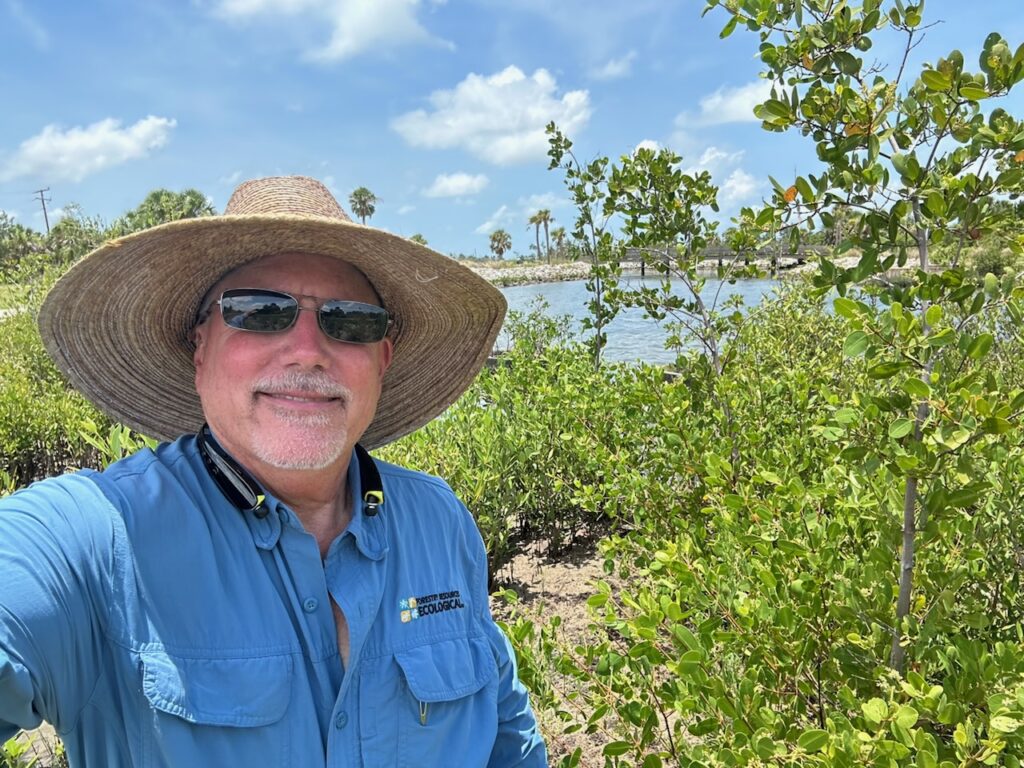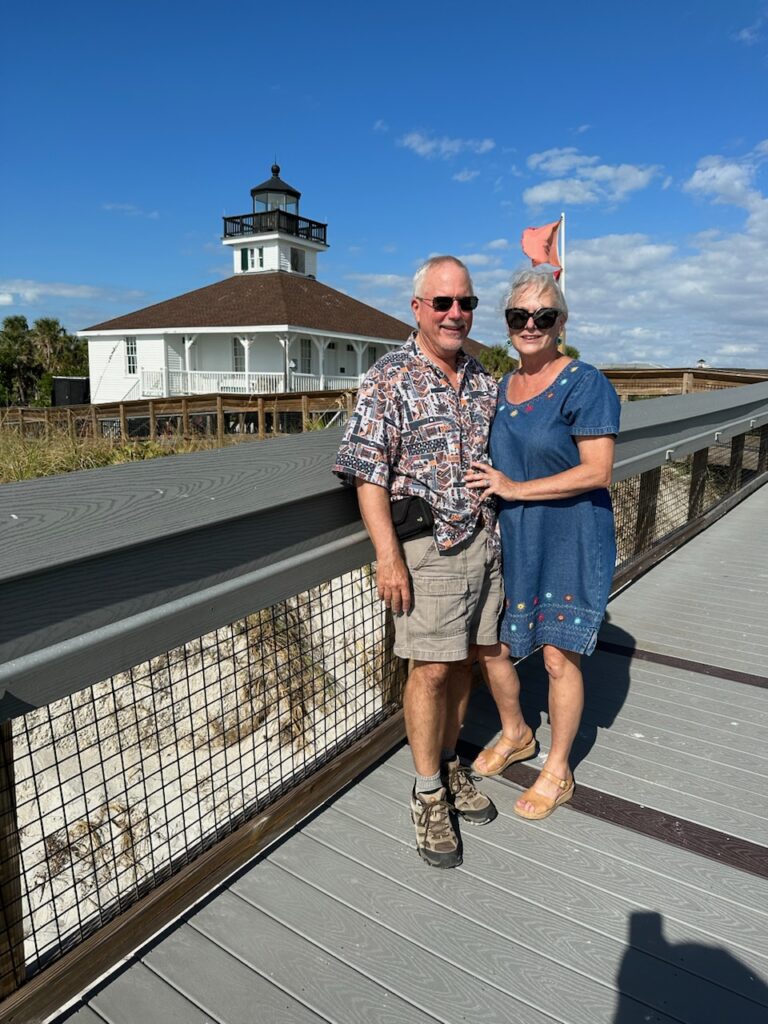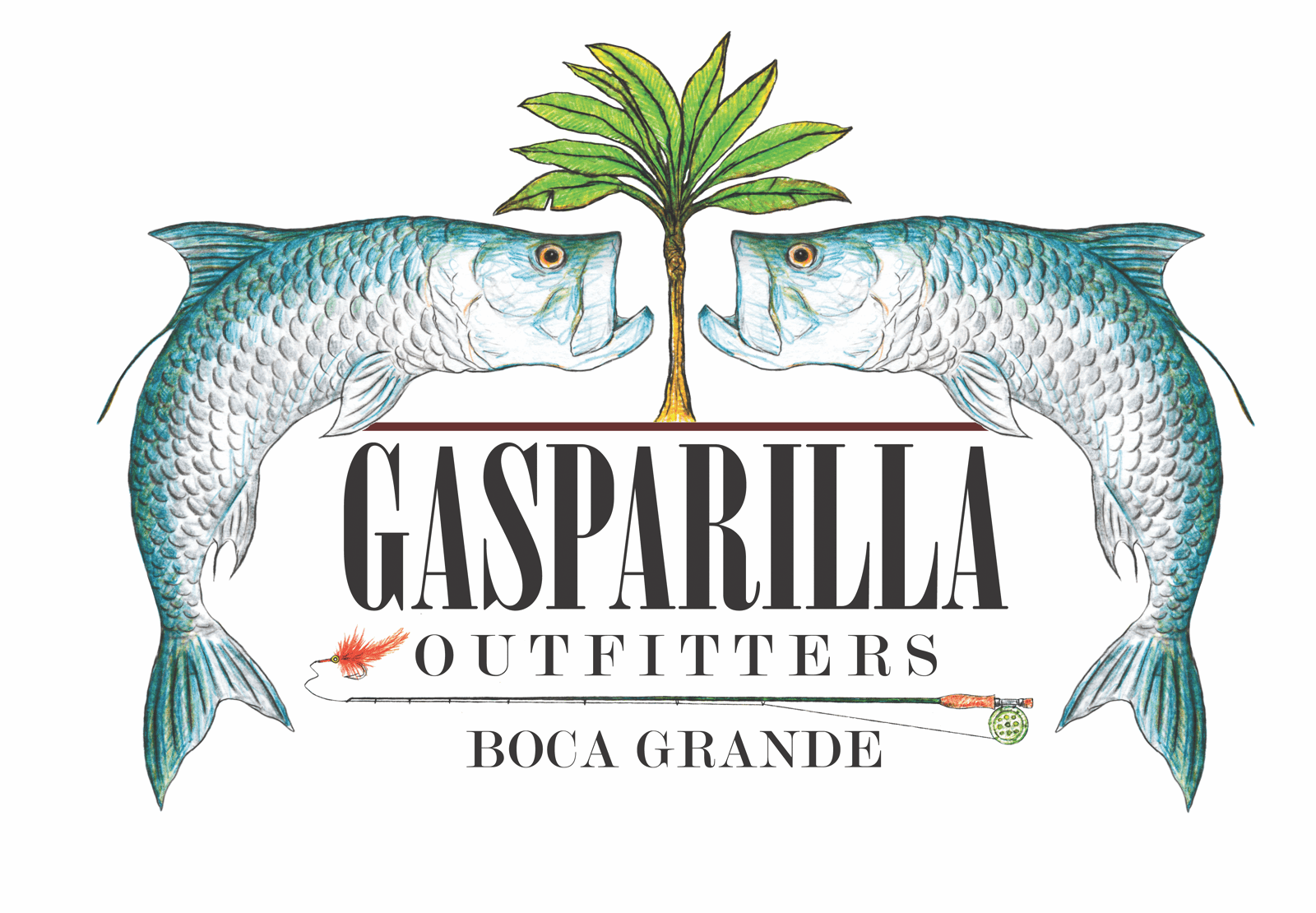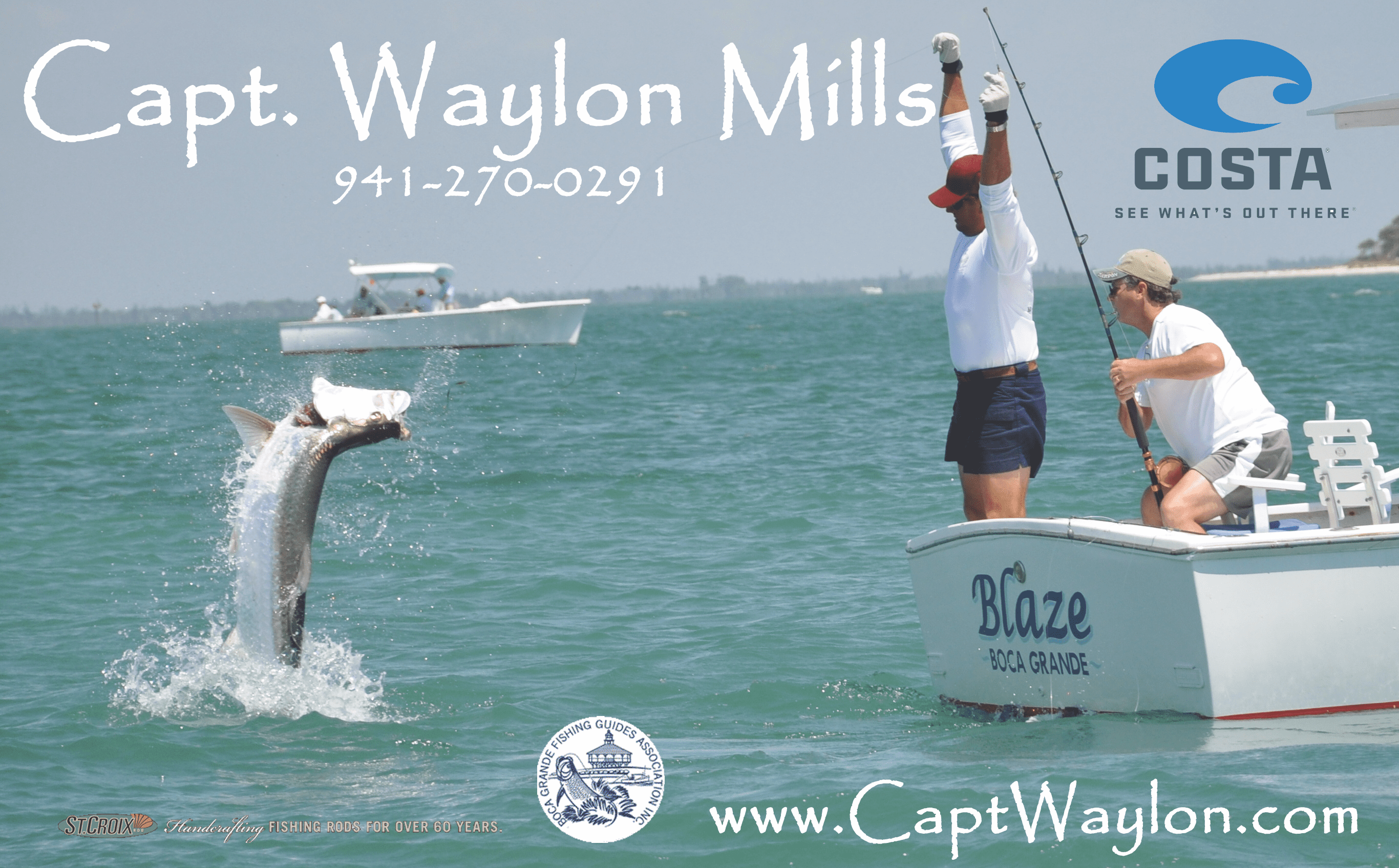IN THE SPOTLIGHT: Curator of the native Boca Grande landscape, Rick Joyce

F
or years, the ecological wellbeing of Boca Grande’s plant life has been one of Rick Joyce’s favorite endeavors. Boca Grande, and all of Gasparilla Island, owes much of its beauty and charm to the talent, expertise and love Rick puts into his work.
Rick is a certified arborist, professional horticulturalist and a man who loves trees, plants and pretty much all of creation. He is president of Forestry Resources Ecological, Inc., located in North Fort Myers, and also owns Deep South Native Nursery.
Forestry Resources Ecological offers a wide range of ecological restoration and land management projects for private and public clients. This includes removing exotic plants, managing vegetation, installing native plants, consulting on landscape and tree selection and more.
Deep South Native Nursery specializes in native Florida plants, collecting seeds and growing native trees, palms, shrubs, ferns, wildflowers, orchids and ground covers.
Rick has been involved with the Gasparilla Island Conservation and Improvement Association (GICIA), and the Barrier Island Parks Society (BIPS), in such efforts as beautifying and maintaining the island’s bike path, identifying appropriate ground cover to enhance the Range Light pathways and assisting in the investigation of an attack by some invasive bug causing the leaves on Banyan Street trees to drop off.

Some of these efforts predate the establishment of his companies, as he also served for 19 years with the Lee County Community Development Department, eventually becoming director of environmental sciences for the department. His staff was involved in the review of all building permits that might have an impact on the natural environment. In Southwest Florida, that would include nearly all building permits. Their review spanned every stage in the process, from planning to enforcement. At one point he oversaw a staff of about 20 people.
“I loved what I did there,” he said.
He left that job to work for the opportunity to be part of the original design team for Babcock Ranch.
“I went to work with Kitson and Partners, Sid Kitson, Babcock Ranch, and I was part of some of the early fundamental designs of that community. Great experience! One of the things Sid wanted was to ensure the community had canopied streets,” Rick recalled. He noted that such a thing sounds easy and obvious, but it is not.
“There’s a lot more to that,” he said. “Where do you have the gas line, the sewer line, the reuse line, the electric line, the telephone line, the drainage for the community and the roads and the sidewalks? And where do the trees go? Well, I was the champion for the trees, to ensure they had adequate rooting space, because that’s a pretty fundamental mistake that’s made in many newer communities. If you want big trees, like live oaks, they need bigger rooting spaces. That’s something I really worked hard on.”
Details are important in the kind of work Rick does, and he sees those details pertaining to dealing with people, as well as with trees. Rick asserted that his work is not only focused on improving the environment, but has a lot of people connections, as well. At all stages of his development as an arborist, a businessman or a boss, his respect and appreciation of the people he is working with and serving is paramount.
“Being friendly and considerate are part of the job,” he said. “Even in an enforcement situation, you have to be considerate.”
Rick was not always a scientist or horticulturalist. He started out his professional career in business administration. But Rick’s story really starts with his parents moving from Ohio to Southwest Florida when Rick was in elementary school. Rick went to Lee County schools and then on to Edison Community College, now known as Florida Southwestern College. After community college, Rick studied in Orlando, attending the University of Central Florida.

When he graduated with a degree in business administration, he immediately took off for Silicon Valley. There he worked for an optoelectronics firm, becoming a part of the technology evolution.
“Things were great there,” he recalled, but that was not where he was meant to be. He came home for Thanksgiving that year and happened to meet a girl named Cheryl. She made a big impression. He came back again for Christmas. Then she went out to visit him in California, and it wasn’t long before he decided to move back to Florida, marry Cheryl and find a new career.
He tried staying in the business field. The money was good, but the work was not fulfilling. He had always been an outdoor kind of guy, even being an Eagle Scout in his youth. He discovered a group called the Florida Native Plant Society, and became more and more involved with what it was all about. It sparked a new passion.
“I went to the Lee County Vocational School and took every horticultural class they offered at the time,” he said. “Landscape design, principles of nursery operations, all these basic horticulture classes, and it gave me a nice fundamental appreciation and understanding of growing plants. I really got pretty motivated, that I needed to make a career change.”
“I just got more and more motivated to learn about these plants, learn about these trees, being able to identify them and learn what they liked to grow, and how to successfully plant trees and plants, but also the whole idea of ecological restoration,” he said.
His boss was a highly respected horticulturalist, and just being around him was educational. “It was not only formal landscaping, but being able to rebuild plant communities that had been removed through urbanization and development, and restore them back to the healthy systems that don’t need inputs. They don’t need irrigation, other than to get established. You don’t have to provide fertilizer, you don’t have to provide fungicide, insecticides, all the different things we frequently use on ornamental landscapes,” he said.
Rick said he is still learning new things every day, and recently attended a conference of the International Society of Arborculture. There he eagerly took in information from “tree people” from throughout the world, learning about successfully planting trees in the highly developed areas of Japan, as well as other challenging places. Everyone there seemed to share the goal of keeping the world green and healthy.
In Boca Grande, Rick’s approach to creating beautiful spaces with native plants, and making them prosper without the use of many other resources, has been especially successful. He said he has been working for many years with Sharon McKenzie, executive director of BIPS, and Misty Nabers Nichols, executive director of CICIA, and cannot say enough good things about either of them, their boards, and their generous supporters. He is proud of their accomplishments, helping to preserve the beauty and charm of the island, while being true stewards of the natural environment.
Rick said those efforts are continuing with many projects including the Mercabo Project at the northern end of the island, which continues to add new stages of land and water-quality improvements.
The Boca Grande Bike Path is another big success, he said. “Except for the two-block area in the downtown area, none of it is irrigated or fertilized. And yet, it is beautiful! It’s not adding nutrients going into the harbor or Gasparilla Sound. It’s a self-sustaining landcape. And really, it’s not an ecological restoration project, but a native-based landscape project that has been successful and looks attractive.”
He went on: “It’s a dramatically low amount of maintenance, when you look at those plants that don’t need all those additional chemicals to keep them alive. So, to me, that’s very rewarding to see.”
As one of the people who helped coordinate the clean-up of the path after Hurriane Ian, Rick said, “For me, the value of these types of native plants as part of the landscape shows in how quickly the bike path recovered. Some plants that would have gotten hit like that would have been just torn up, and broken and bad. And we still had to move some trees, but the path was able to be open again in about a week. At least you could travel on it.”
He gave special credit to Luis Mendoza of Gasparilla Landscape Service, who is the long-time caretaker of the Bike Path for the GICIA. “It’s a lot of work,” Rick noted, “and he does a great job. That Bike Path is a great community asset.”
Rick’s off-hours passions include being a sort of treasure hunter. He loves finding surprise treasures at estate sales, Goodwill, other thrift stores or wherever. He also loves fossil hunting, and finds treasures there, too. He has always been a history buff, and often all those special interests merge into great finds of historical value.
He and Cheryl sometimes participate in plant sales, especially the big ones at the Edison/Ford estates, and in Cape Coral. They sell their native plants, and usually come home with very few plants left, which is a good thing to them.
Rick will soon be 66 and has no thought of retiring, ever. He said he and his gym workout partner have bought into the “Clint Eastwood theory” of “You just don’t let the old man in.” Cheryl retired from nursing, but is still the primary keeper of the nursery.
He does have some thoughts he would like to pass on to younger generations, however. The main one is, “Learn how to write. Being able to write properly–paragraphs, punctuation, grammar–helps you, no matter what your careeer. And, secondly, just have passion for what you do. I look at my career change, going from a commercial property and casuality insurance agent, which I didn’t enjoy, to going to an entry-level position, but I never looked back. And, even though I’m not academically trained on plants, I am pretty knowledgeable and it’s through the vocational school. So, it doesn’t even have to be through a college. We had a great instructor, who was an excellent horticulturalist, so, you learn things. And volunteering at the Native Plant Society, helped me get really active.”
He has a couple more points to make: “For me, it’s very rewarding to look at trees, particularly, and I love all the native plants. But it’s wonderful to see a tree you planted as a 3-gallon, 4-foot-tall tree, that’s now 15 inches in diameter and 50 feet tall. It’s pretty rewarding, man. It’s fun to see that it does really work. And I’ve planted thousands of trees in the area, but still, it’s making a difference.”
“I especially feel honored to have worked in Boca Grande for all these years, I really do. I see my stuff and the things I’ve been involved in that have made a difference. I think the land conservancy that the GICIA operates was a wise decision. It allowed protection for places that would have just had more development on it. It softens the island.”









